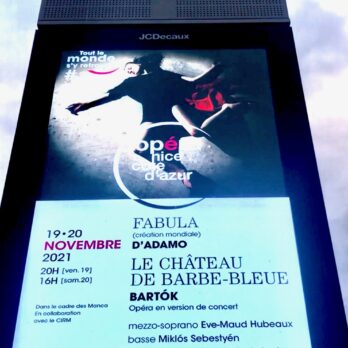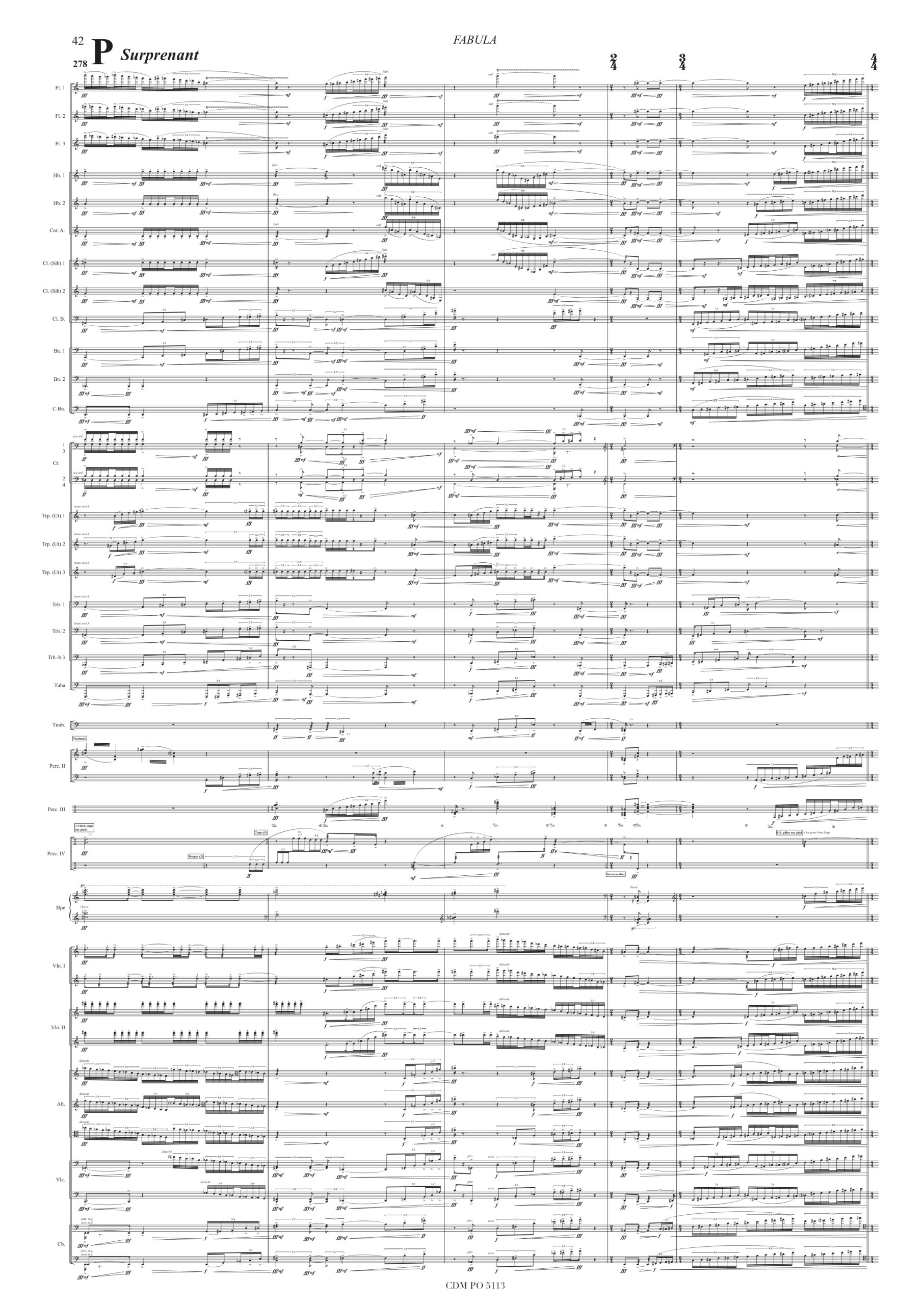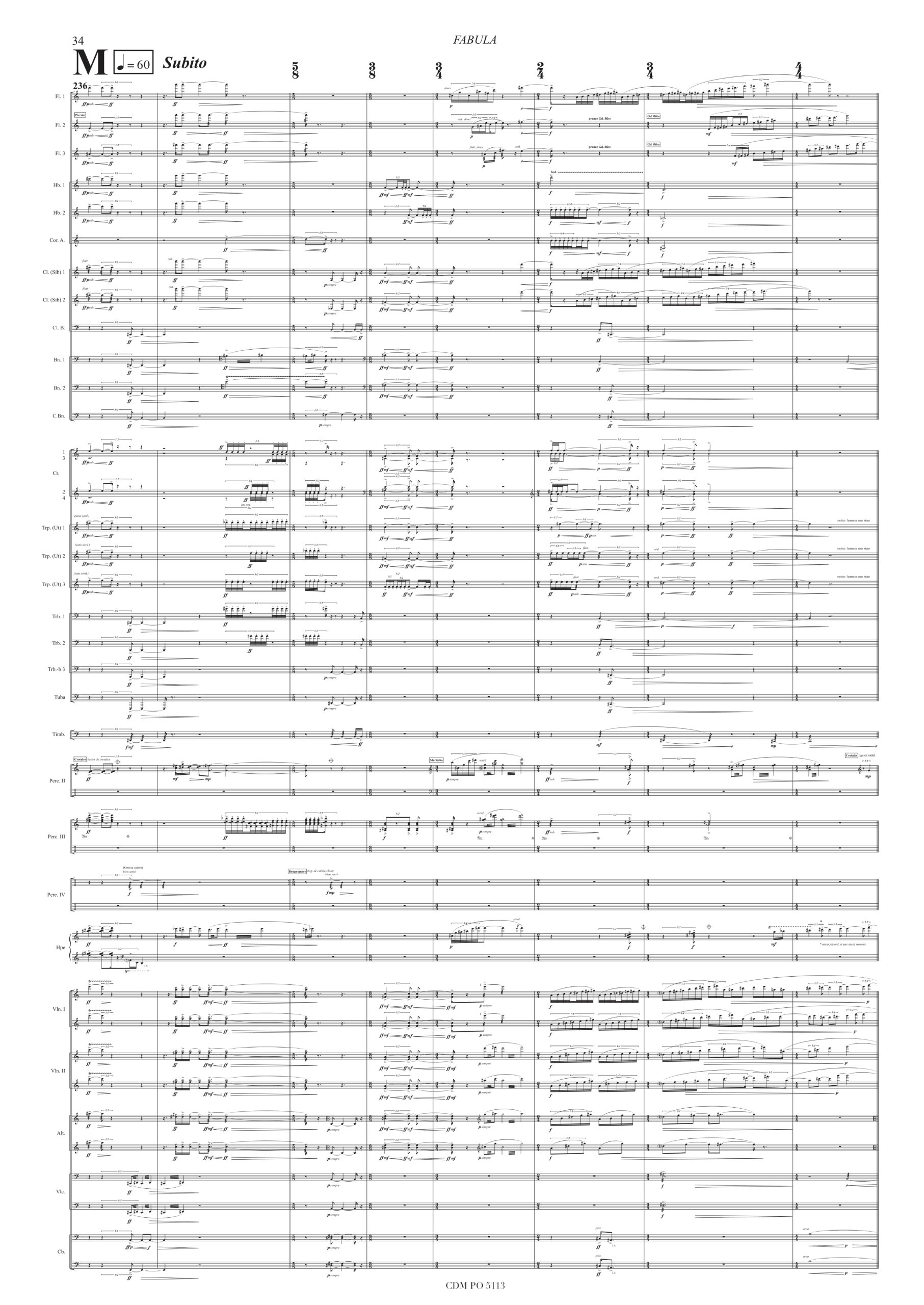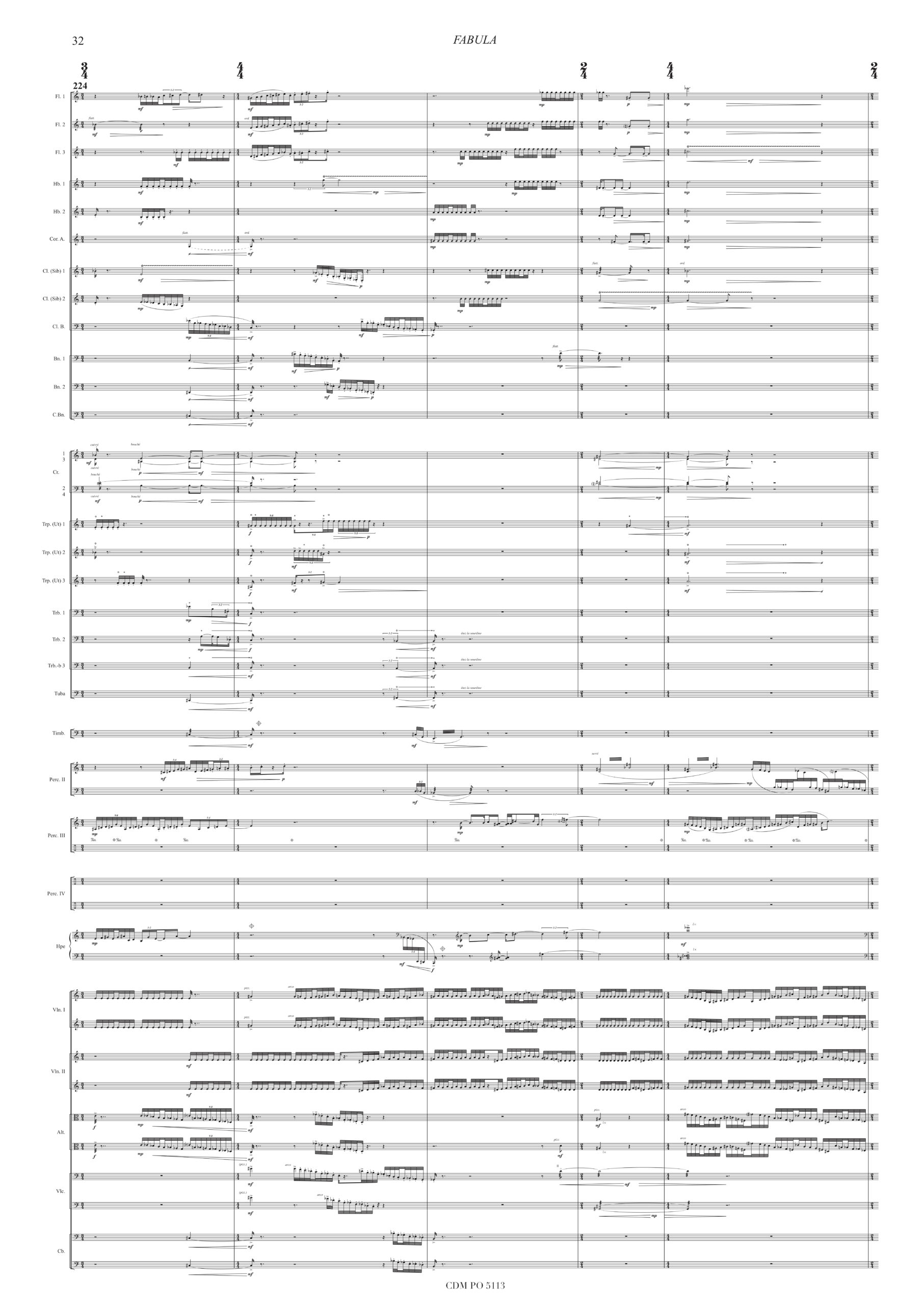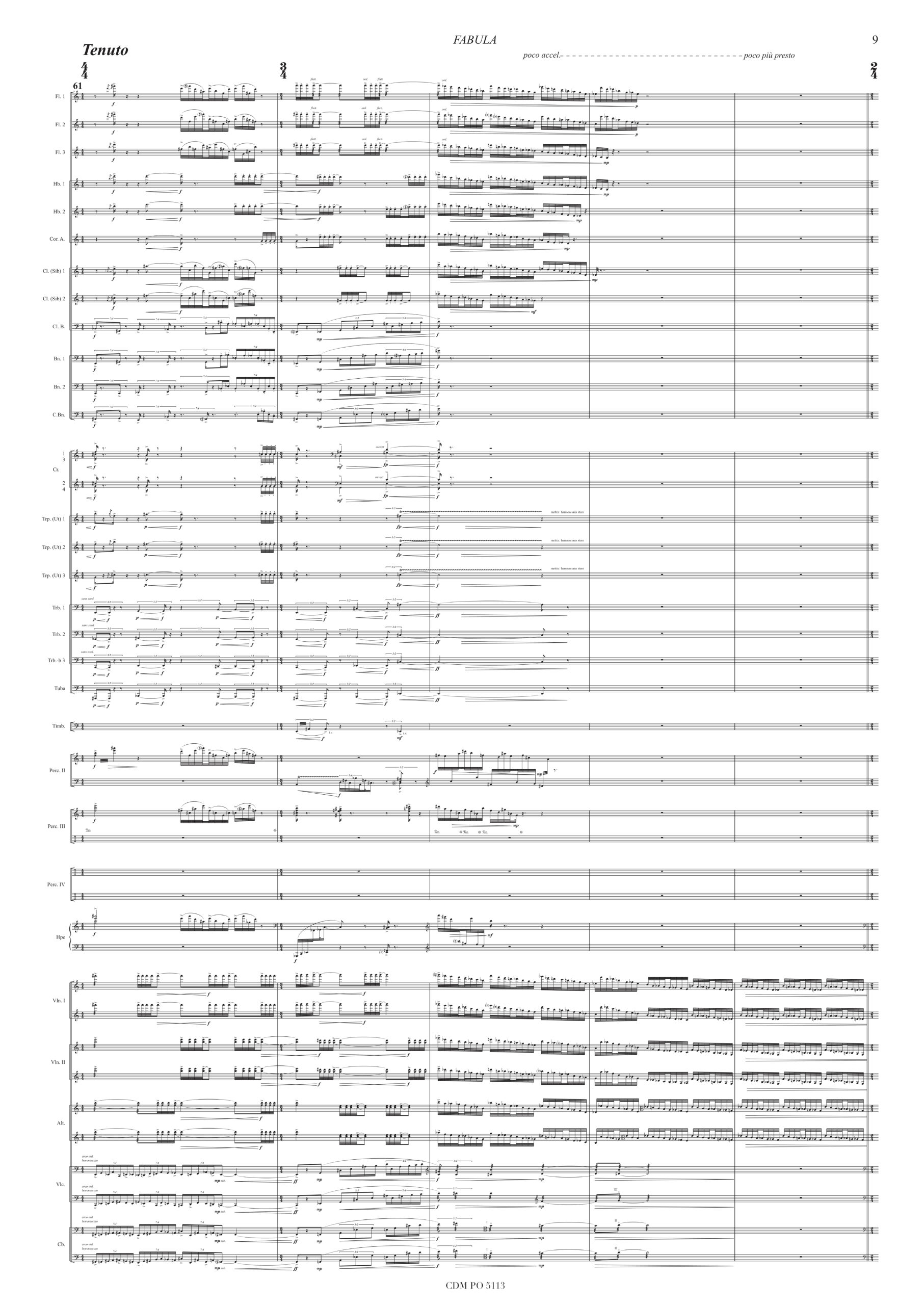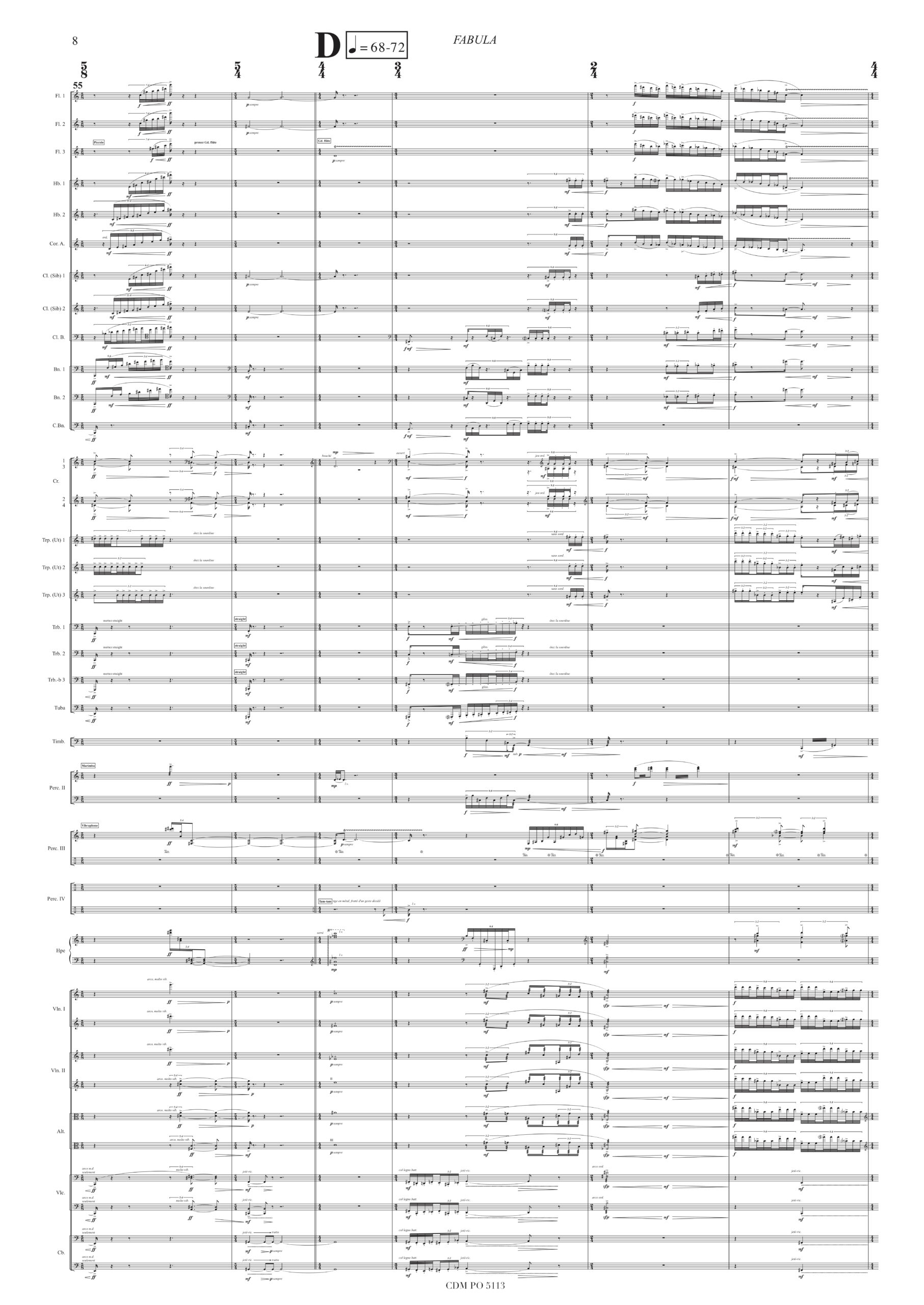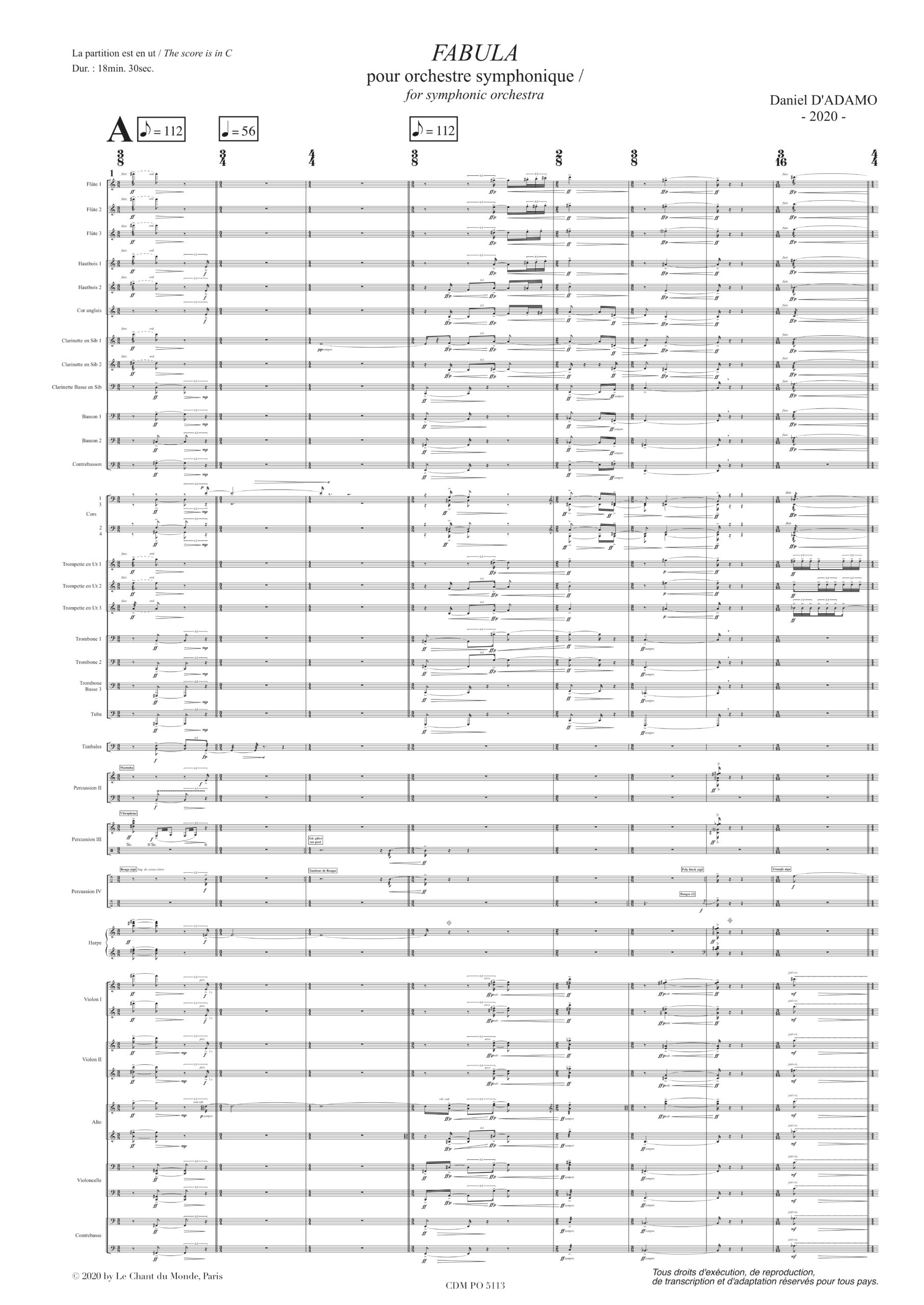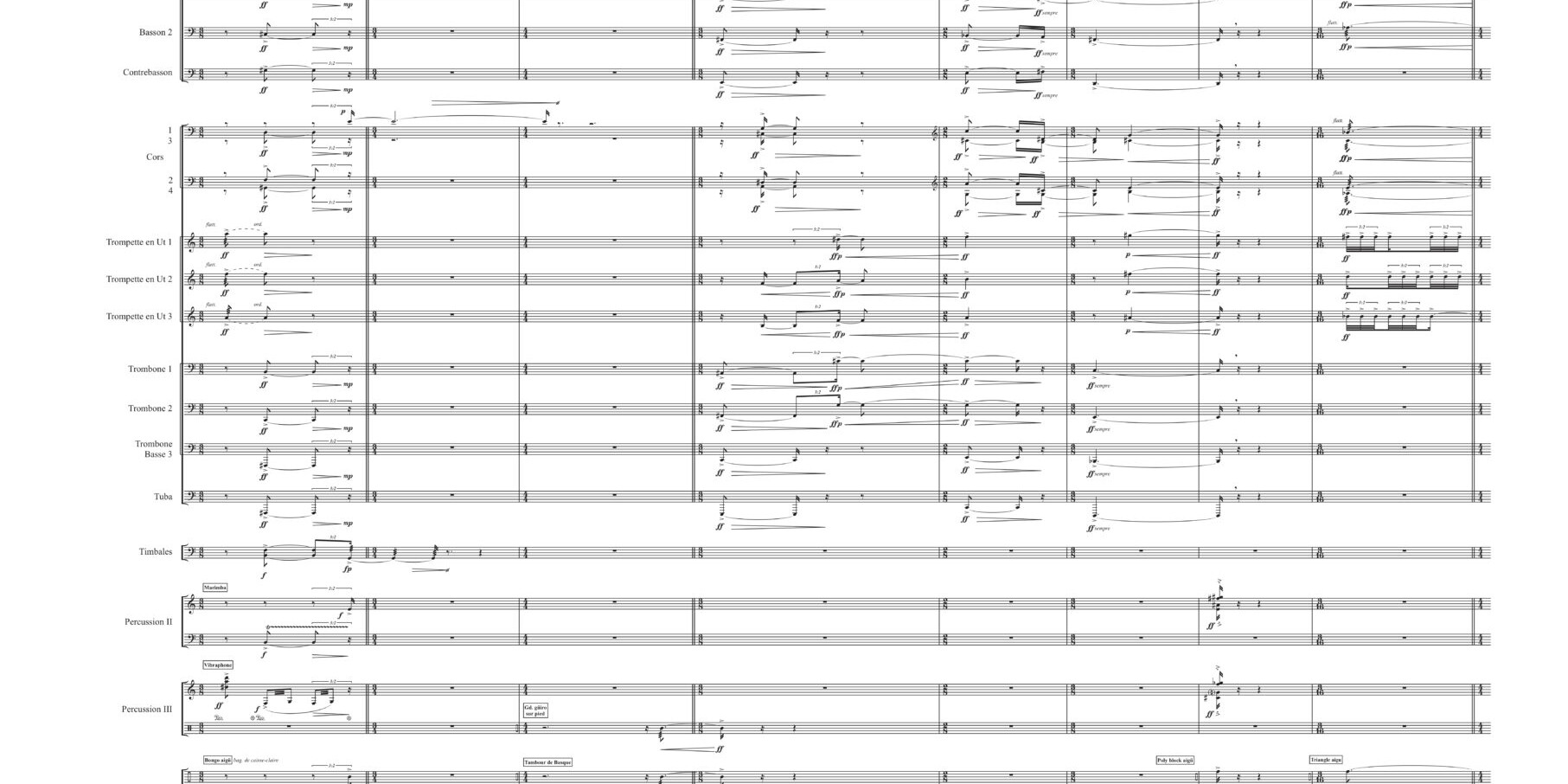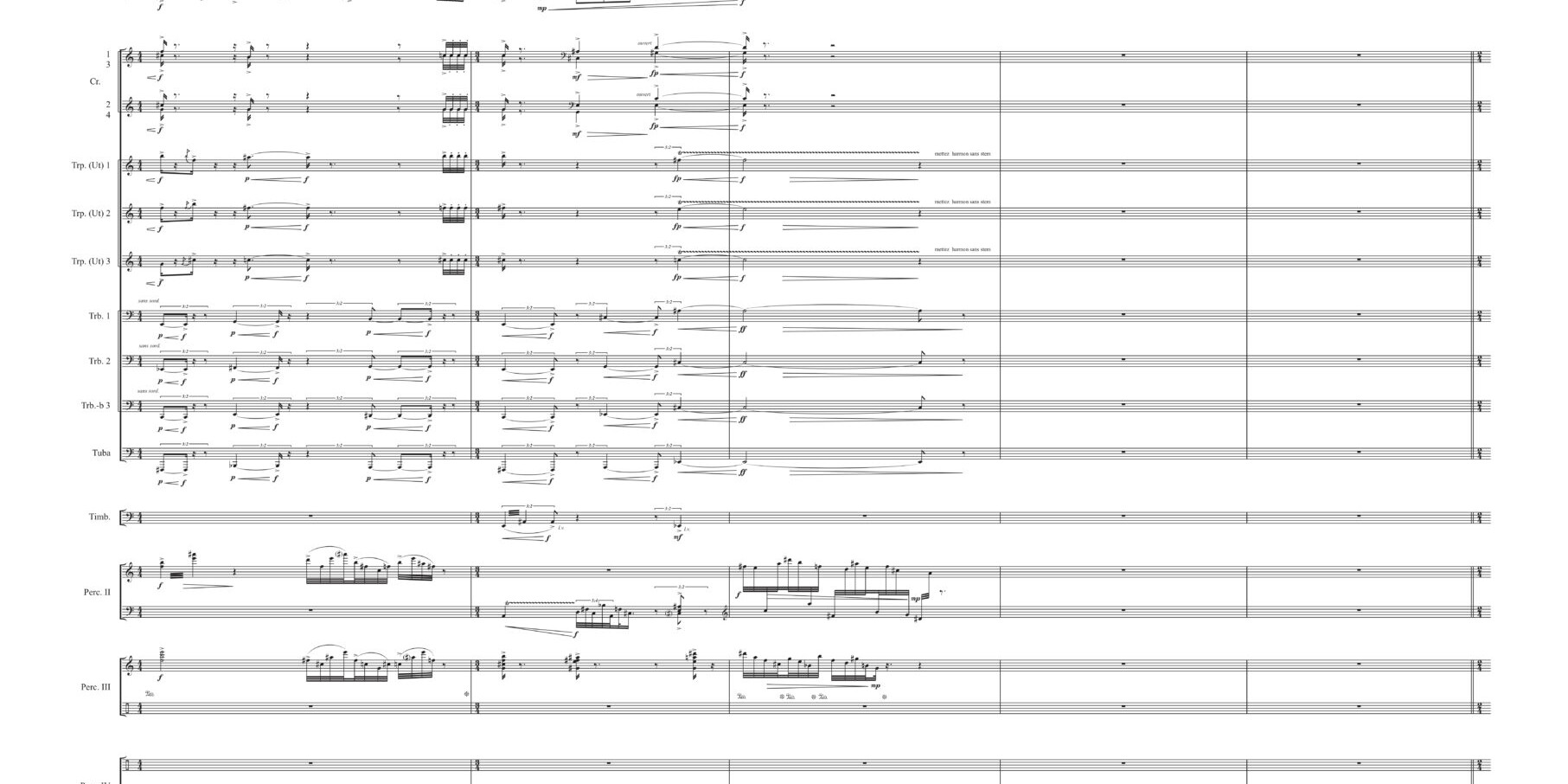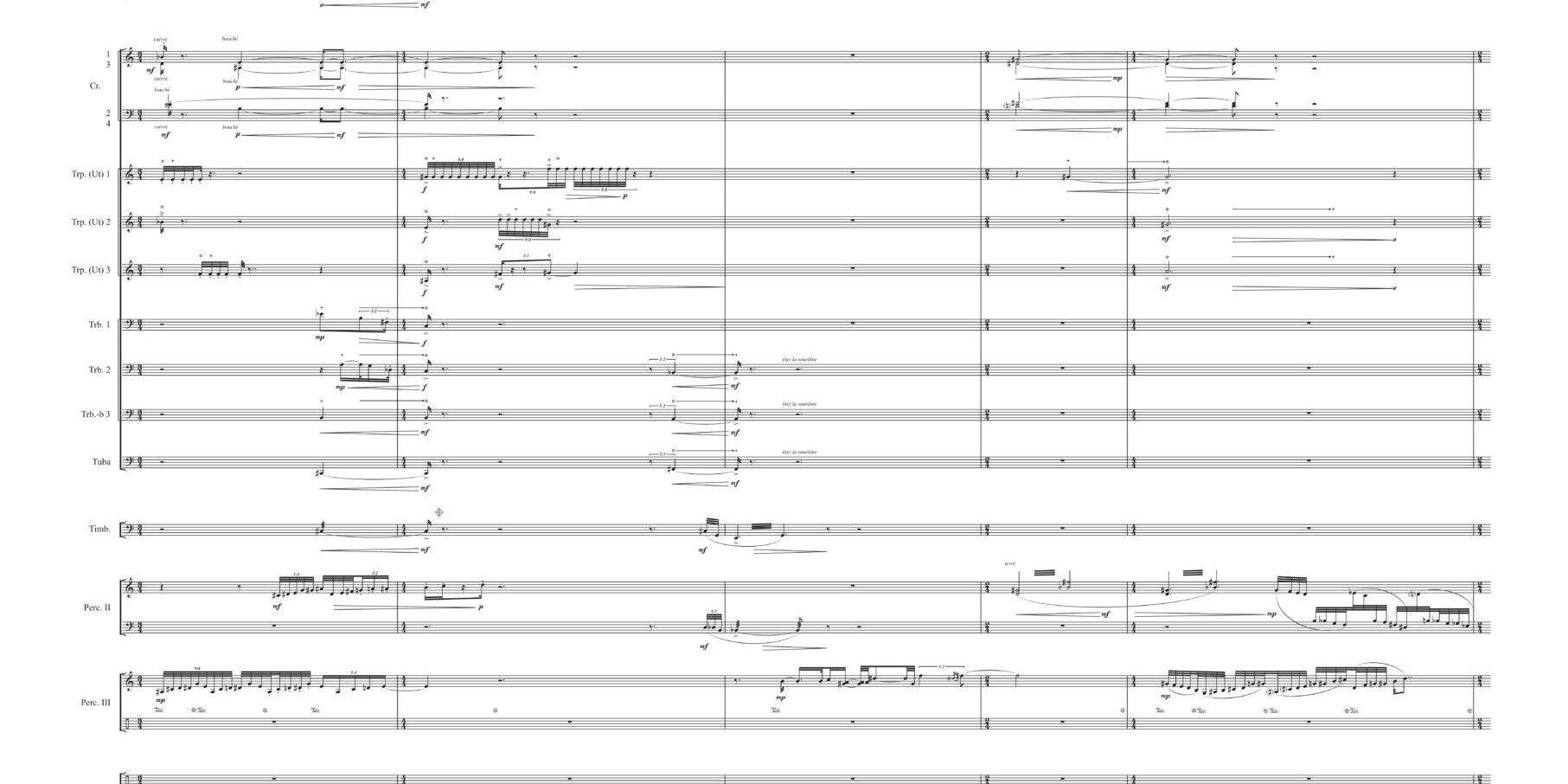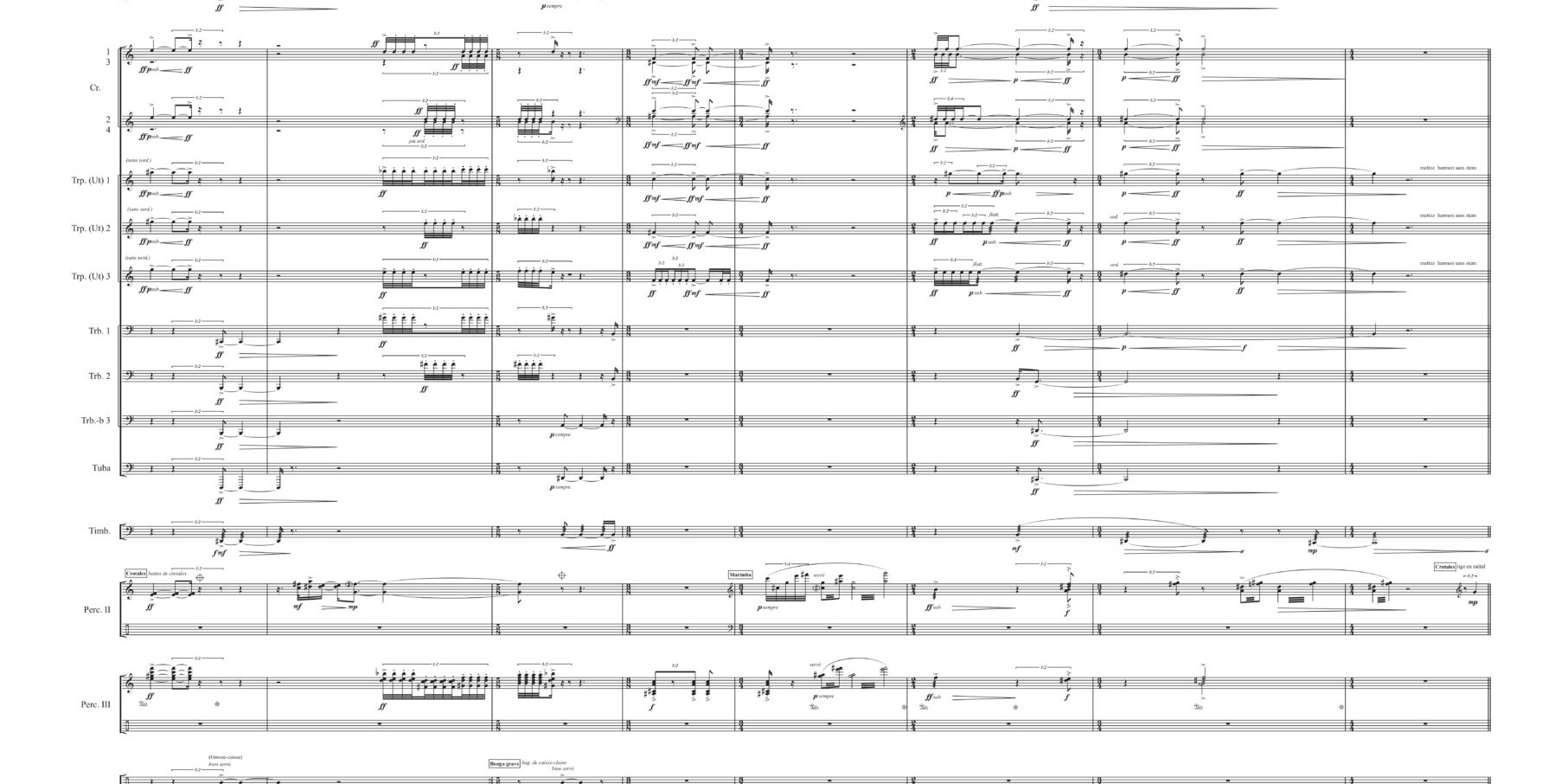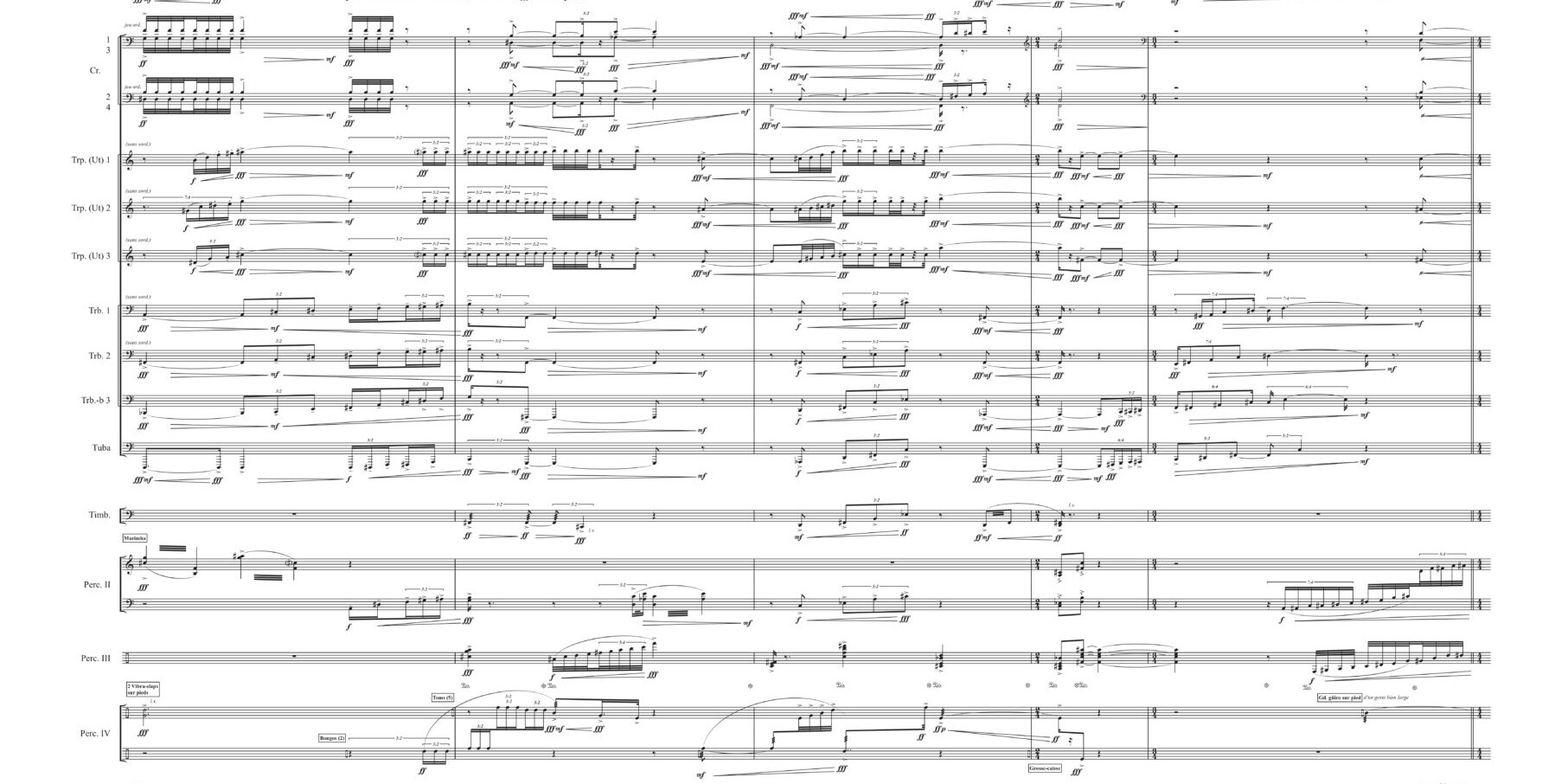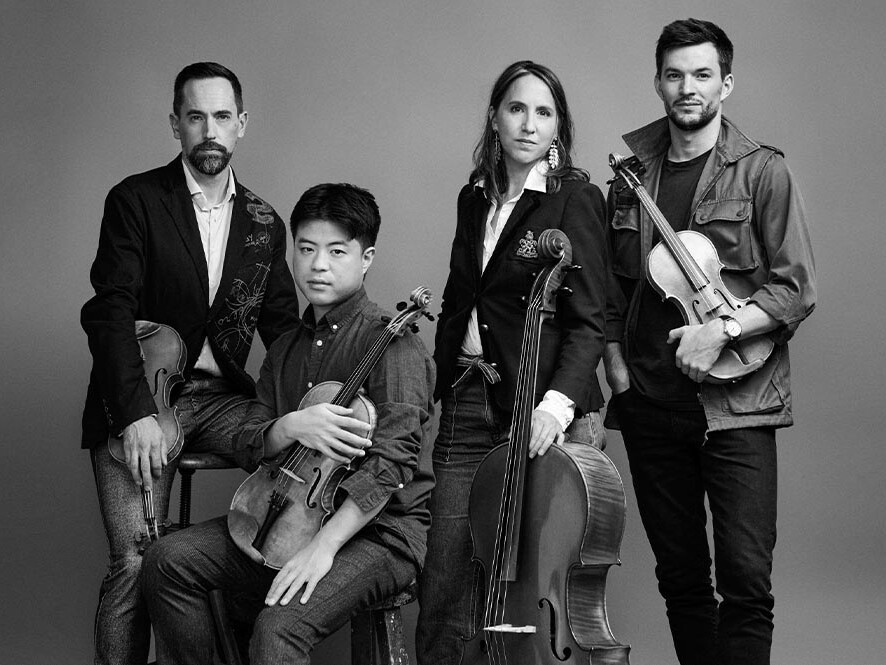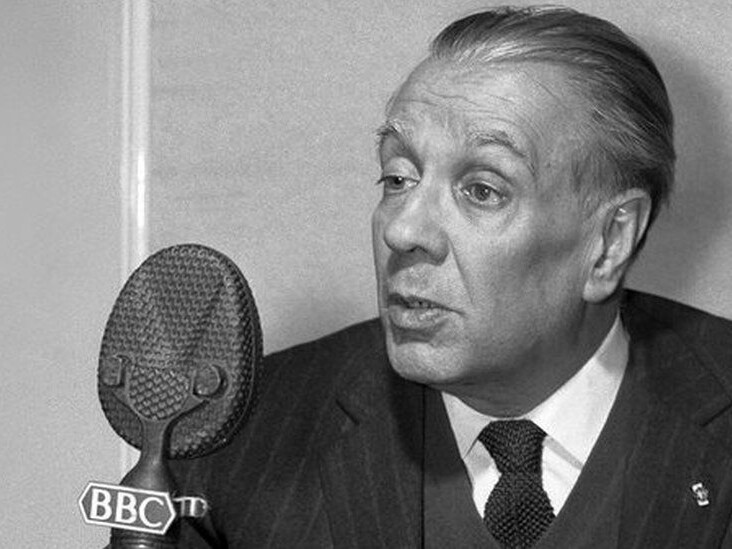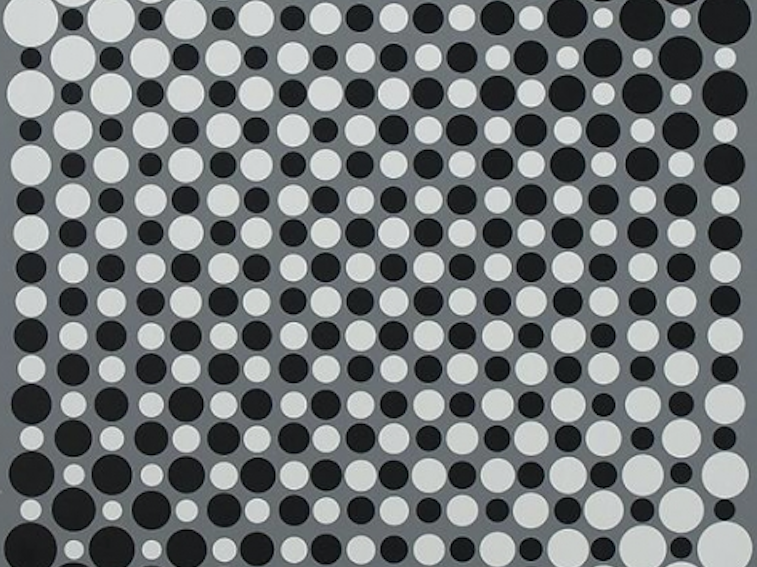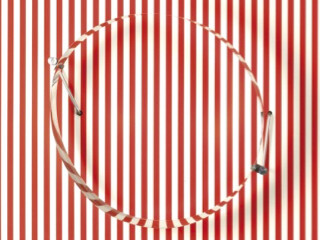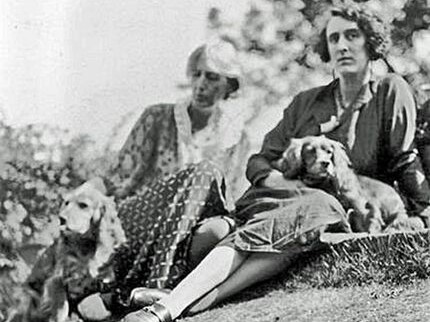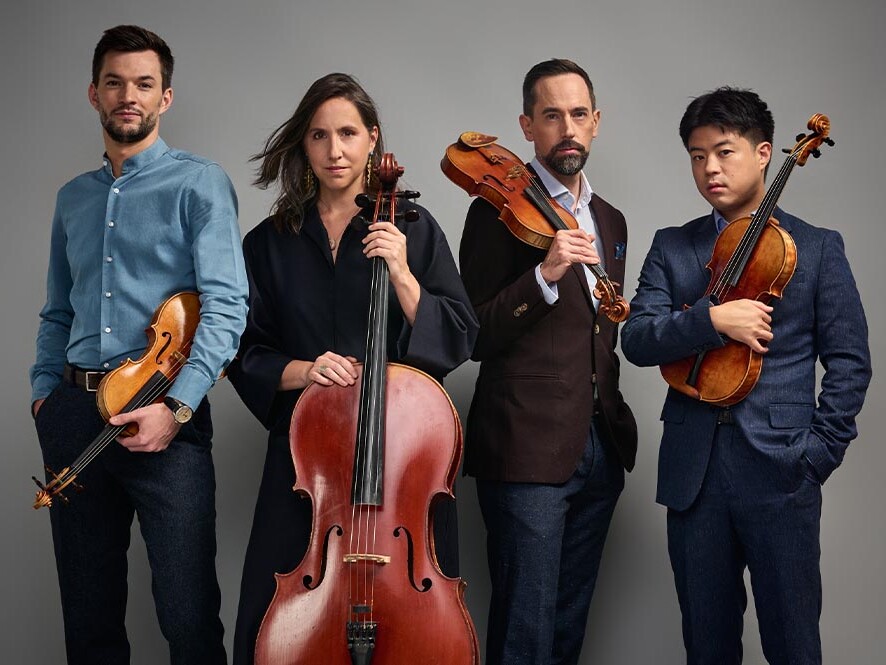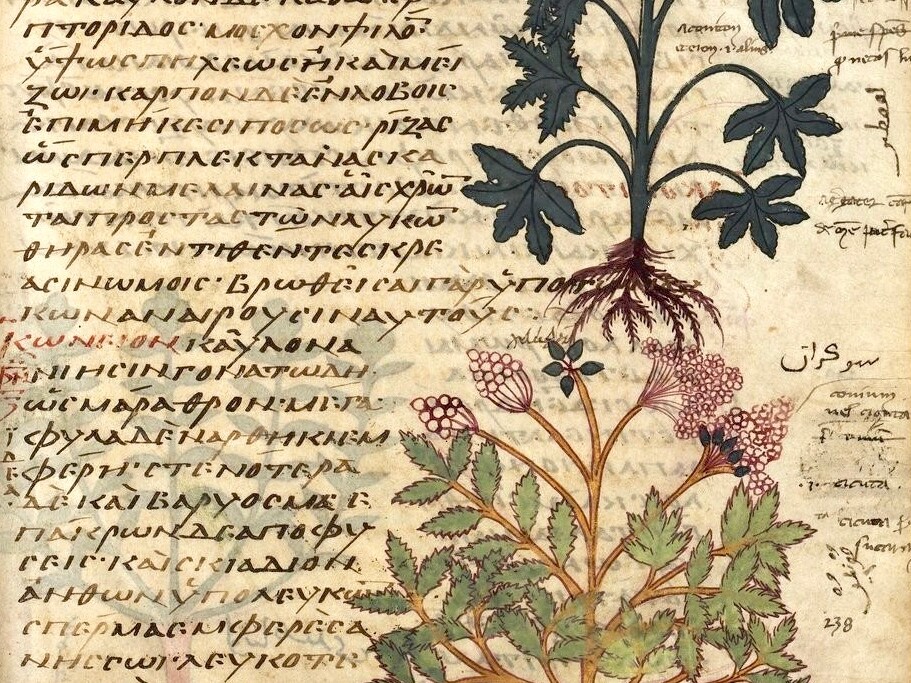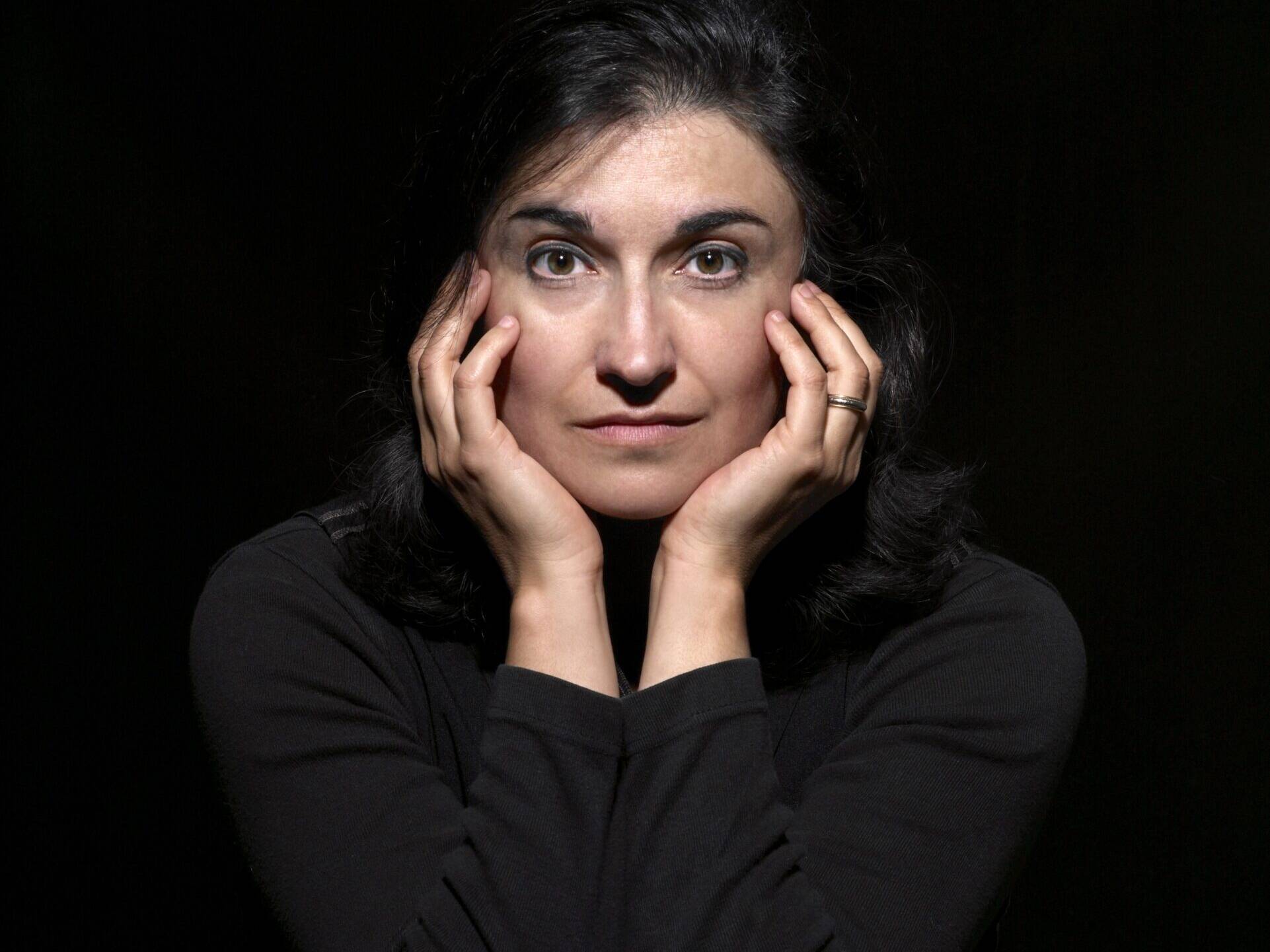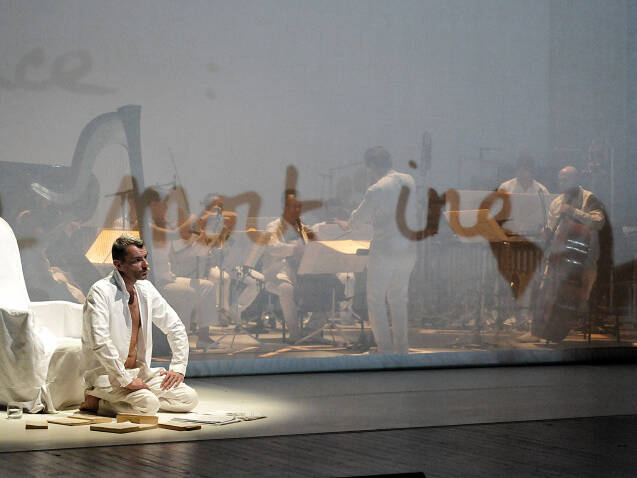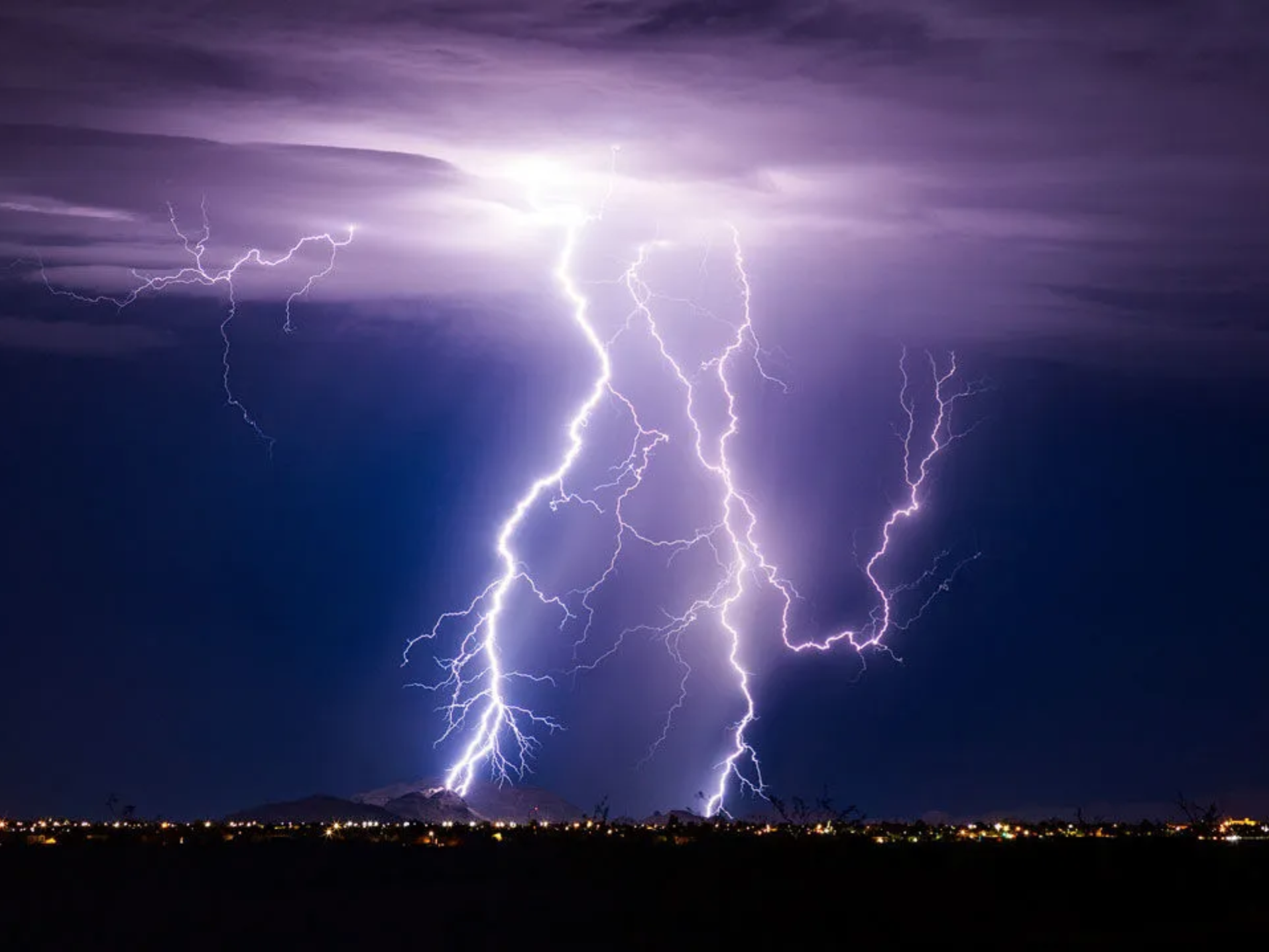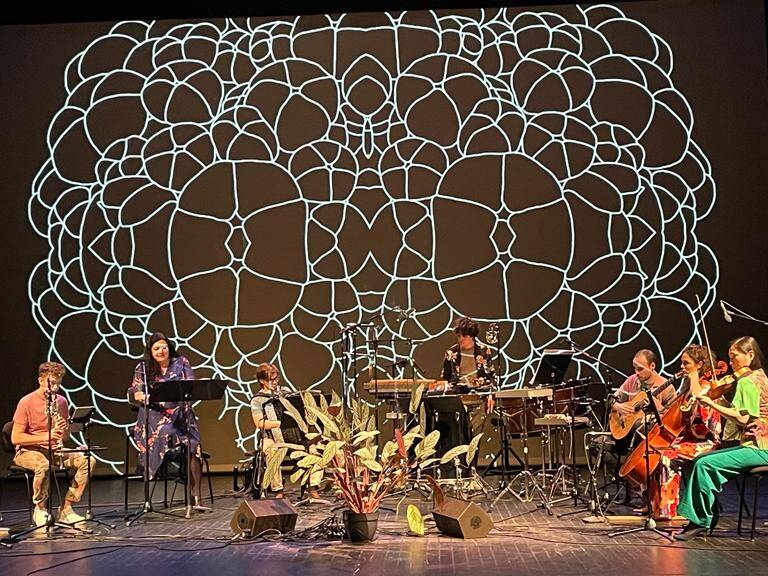Publisher:
Première:
2021, Orchestre Philharmonique de Nice, Marko Letonja cond., festival Manca, Nice, France.
Year
2021
Commission:
Ministry of Culture for the MANCA Festival, CIRM-CNCM, Nice, France.
Duration:
19 min
Fabula – 2021
for orchestra
The word Fabula, of Latin origin, comes from the verb fari which means “to speak” or to express something verbally. It has therefore come to mean “story” or a told story. The closest equivalent in ancient Greek is mythos, which simultaneously means “word,” “story,” “speech” or “legend.” The central question in creating a fable, is the presentation of acts imagined by the mind as real. It therefore implies the systematic invention of a story, a pure fabrication – the possibility of producing a lie.
In the narratology of early twentieth-century Russian formalists, «Fabula” referred to the order in which the various elements of the narrative are presented. Consisting of raw materials such as events, situations, characters, and facts, the Fabula presents materials in a certain chronological order but which is not necessarily fixed or pre-established. It is simply a chronological sequence of events arranged to form a subject, a plot, a dramaturgy. In this sense, Fabula is “the dynamic shaping force of the narrative discourse.” 1
1 Brooks, Peter. Reading for the Plot: Design and Intention in Narrative. New York: Harvard University Press, 1992. Daniel D’Adamo
Fabula – 2021
pour orchestre
Le mot Fabula, d’origine latine, dérive du verbe fari qui veut dire parler ou exprimer par la parole, prend donc le sens de récit ou d’histoire racontée. En grec ancien le mot qui est le plus proche est myhtos, signifiant à la fois parole, récit, discours ou légende. Dans la construction d’une fable, la question centrale consiste à présenter comme réels, des faits imaginés par l’esprit. Cela signifie donc, l’invention systématique d’une histoire, une pure fabrication : la possibilité de produire un mensonge.
Dans la narratologie des formalistes russes du début du XXe siècle, la Fabula définit l’ordre dans lequel sont présentés les différents éléments du récit. Constituée de matériaux bruts comme des événements, des situations, des caractères, des faits, la Fabula présente des matériaux dans un ordre chronologique déterminé mais qui n’est pas nécessairement fixe ou préétabli. Elle est donc simplement une suite chronologique d’événements manipulés pour former un sujet, une intrigue, une dramaturgie. La Fabula est alors « la mise en forme dynamique comme force du discours narratif 1 ».
1 Brooks, Peter. Reading for the Plot : Design & Intention in Narrative. New York : Harvard University Press, 1992.

